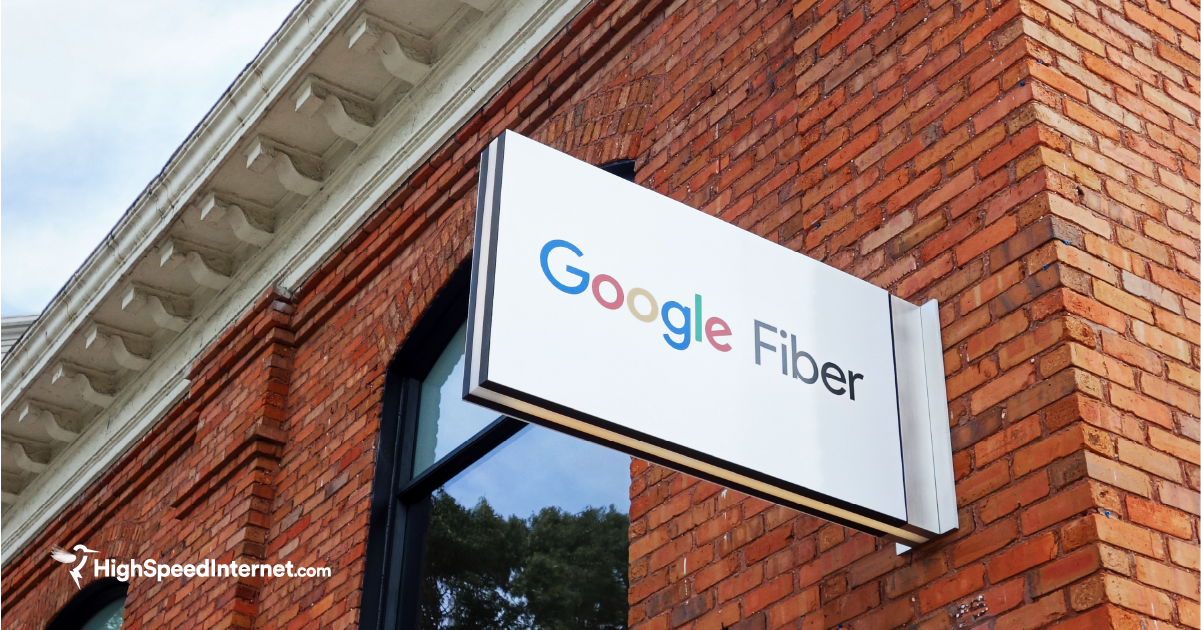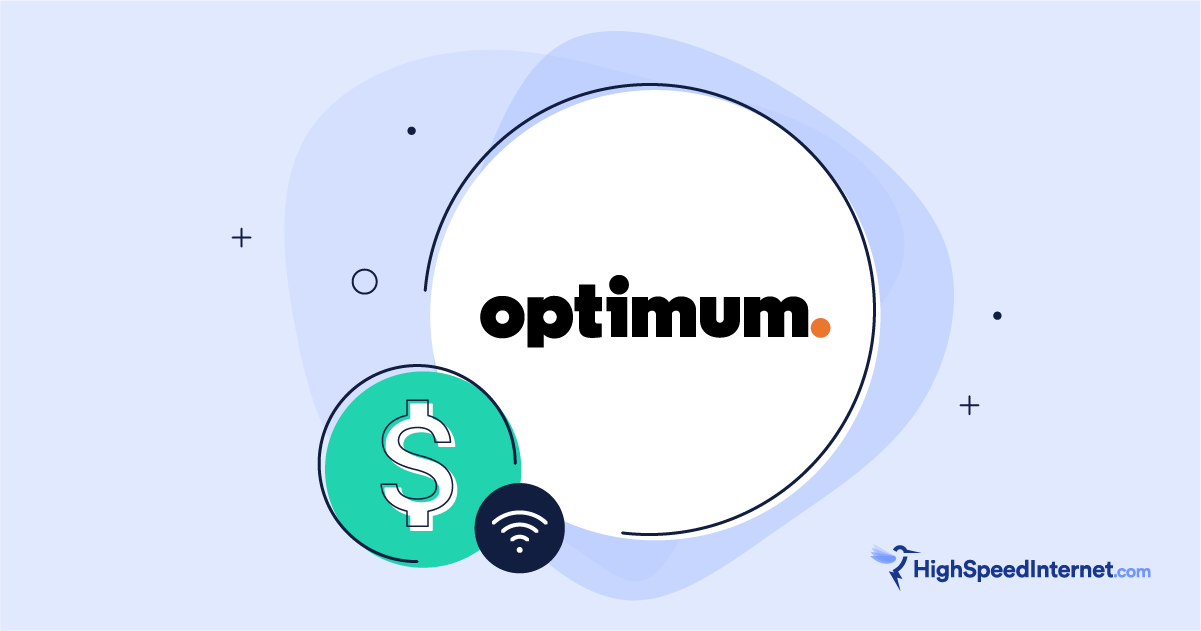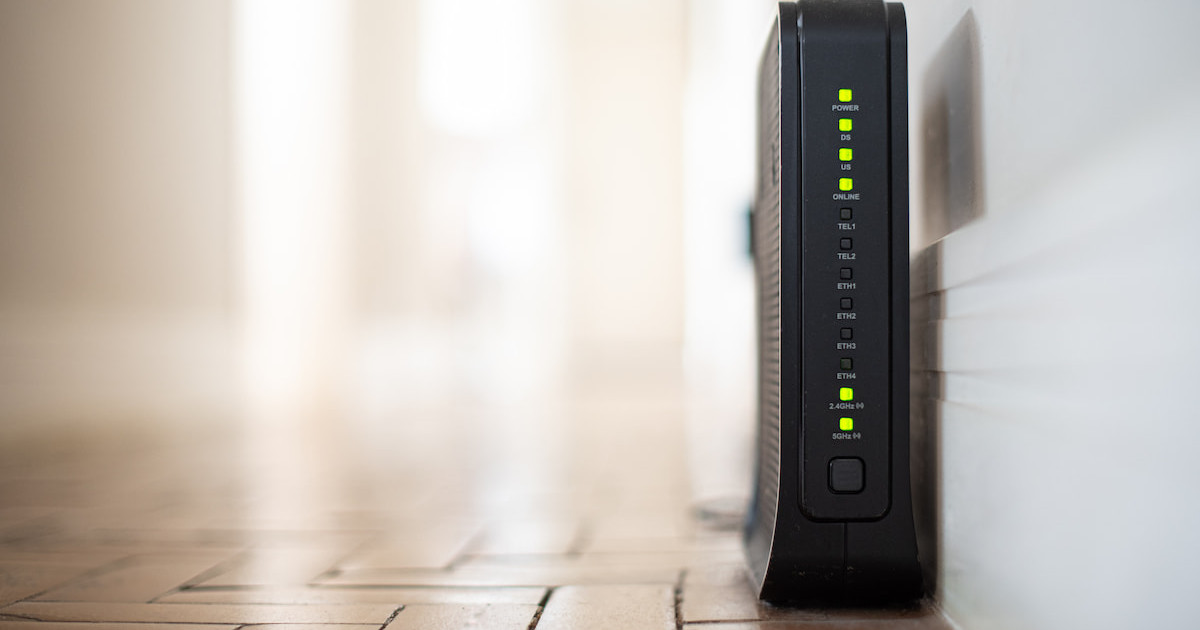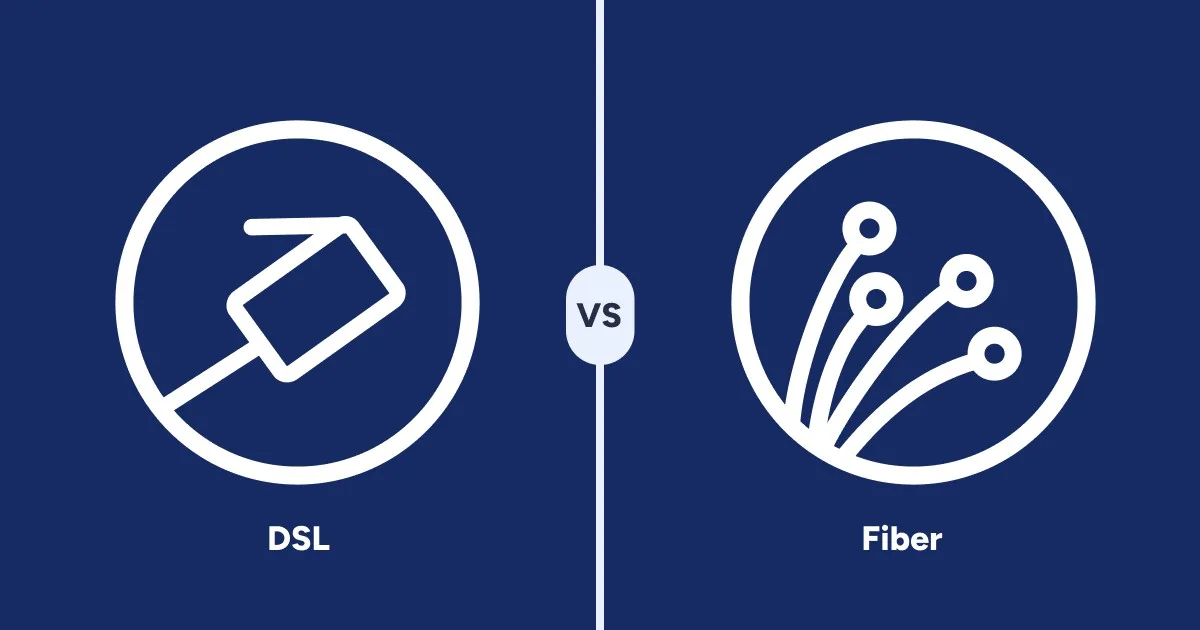Internet for Apartments: How to Get Wi-Fi Where You Live
Jan 20, 2026 | Share
FAQ
When you move into a new apartment, there are two main ways to get connected to the internet. If you have a “Managed Media,” “Managed Wi-Fi” or “Media Package” agreement required with your lease, you’ll probably have high prices and zero options.
If you’re moving into an older building or a leased condo, on the other hand, you’ll likely have to figure out internet access for yourself. It can be a hassle, but we think it’s a good thing!
When you have freedom of choice over your apartment’s internet, you control your home network and your finances. You get to do the following:
- Select your own provider
- Pick your plan
- Benefit from bundle deals
It’s easy to make a move with T-Mobile 5G Home Internet. Get set up in 15 minutes or less—no technician needed!
View Plans for T-Mobile Home InternetOn this page:
Does your apartment have internet? | Best plans for apartments | How to get apartment internet | Internet types | Internet speeds | Modems and routers for apartment internet | FAQ
On this page:
Does your apartment come with internet service?
When you’re shopping for apartments, be sure to ask the landlord or property manager about the internet situation. Find out the following:
- Are digital services managed, or do tenants get to buy their own internet service separately?
- Is the apartment wired for either cable or fiber internet service already?
- Do any other tenants in the building or complex use 5G home internet?
Even though managed tech services are becoming more common, most renters still need to figure out internet service on their own. Let the fun begin!

Pro tip: Try 5G home internet in your next apartment
In 2026, T-Mobile 5G Home Internet is our top pick for renters who don’t want to use their landlord’s fully wired internet connection. It’s fast, affordable, and easy to set up on your own. It was the top performer in our in-house testing, and you can score a five-year price guarantee if you act fast.
Best of all, T-Mobile 5G Home Internet is easy to transfer next time you need a new place. Just place it, plug it in, and you’re good to go.
If you can’t get T-Mobile 5G where you live, or if you already have Verizon for cell phone service, consider Verizon 5G Home Internet instead. You may qualify for some great deals and giveaways, and the bundles are hard to beat.
Which internet providers are in your area?
Use your zip code to find out which providers deliver internet service to your apartment.
What are the best internet plans for apartments?
| Plan | Price | Get it |
|---|---|---|
| AT&T Internet 300 | $55.00/mo.* | |
| Xfinity 300 Mbps | $40/mo.† for 12 mos. | View Plan for Xfinity |
| Astound 300 Mbps Internet | $30.00/mo.‡ for 12 mos. View Plan for Astound | |
| T-Mobile Rely Home Internet | $50/mo.§ 5 year price guarantee. w/AutoPay. Guarantee exclusions like taxes and fees apply. | View Plan for T-Mobile Home Internet |
Prices and availability as of 01/12/2026. See disclaimers.
The best wired internet service for your apartment will depend on your address and the connections to your building or complex. That said, choose the following if they are available:
AT&T’s Fiber Internet 300 is affordable, reliable, and available in California and huge swaths of the Midwest and American South.
Xfinity’s 300 Mbps plan isn’t quite as reliable as fiber, but you’ll enjoy fast download speeds and decent upload speeds. If your unit is wired for Xfinity, ask if your landlord has access to special rates or bundles.
Astound 300 Mbps Internet comes at a great rate, and you’ll have a similar experience to what you’d get with Xfinity.
T-Mobile 5G Home Internet is an excellent alternative to fully wired fiber, cable, and DSL options. You can install on your own in 15 minutes or less, and the bundle rates are great if you also have T-Mobile for cell phone service.
Some apartments may only have access to sluggish DSL internet—it’s not common, and we don’t recommend it. Unfortunately, it may be your only option. If that’s the case, take what you can get but remember to shop for internet service every few months.
Thanks to the expansion of 5G, the advent of low-Earth orbit satellite internet, and taxpayer-funded infrastructure spending, new options are coming online all the time.
How can you sign up for internet service in your apartment?
Signing up for internet service for your new apartment is easier than ever. Get straight on how much speed you need, then find out who offers service at your new address.
Check our list of internet deals as soon as you find out which providers serve your area.
If you’re not quite ready to pick a plan and hand over your payment info, keep reading for all the details you need.
Should you use your apartment’s internet? Or get your own?
If internet service is included in your rent, or if you have a required media package, it’s best to just go with it. It’s easy, and convenient, and you don’t really have a choice anyway.
But if your unit has a “preferred internet provider” and buying service isn’t mandatory, you have options.
The preferred service could be great—or it could be slow, have security issues, or use outdated equipment. These shared services often pack a bunch of residents on a single Wi-Fi router, which is a recipe for slowdowns and network congestion. You’ll also have no recourse if you need more speed, as you’re stuck with the plan chosen by the apartment complex. Lastly, you may lose the ability to have a direct Ethernet connection, which is faster and more stable than internet over Wi-Fi.
If you don’t like what’s on offer, explore wireless options like 5G home internet.
What’s up with internet types?
As you shop around, you’ll notice that internet service comes not just at different speeds and prices but also as different types—that is, the type of connection used to deliver the Wi-Fi we all love. The most common types of internet you’ll see are fiber, cable, DSL, 5G or fixed wireless, and satellite.
Fiber
The galloping gazelle of internet types, fiber-optic internet is the finest and fastest of the bunch. Running on light signals over fiber-optic cabling, fiber tends to be more expensive than the rest. And it can be difficult to come by, since it’s so costly to build fiber infrastructure.
Most fiber-optic internet plans deliver record speeds of up to 1,000 Mbps (10 times faster than DSL), but you can get plans that go even faster. Fiber offers extremely reliable connections with minimal interference, and pricing is good.
Cable
Cable internet runs over the copper wiring of a coaxial cable company. It gives you fast download speeds—equal to fiber in many cases, topping out at 1,200 Mbps—and a solid connection.
Cable doesn’t deliver the same ultrafast upload speeds as fiber internet, but most internet users spend most of their time downloading data, so you likely won’t notice the difference. Uploading data comes when you upload files to a server or make video calls on Skype or Zoom. Though cable has enough upload speed for your average video calls and uploading, you may notice the slower upload speeds if you spend a lot of time doing upload-heavy tasks like these.

Pro tip:
Read our guide to download and upload speeds for a breakdown of what uploading and downloading means and what speeds work best for you.
If the coaxial cabling is already set up in your place, then installation will be much easier. You may still need to schedule a technician appointment, though. Apartment buildings use a junction box to house the tap that connects each apartment to the provider’s network. These boxes are locked and off-limits to residents—if your apartment isn’t hooked up to the tap, you’ll need a technician to access the box and connect the appropriate cabling.
Fixed Wireless and 5G home internet
There are two kinds of fixed wireless internet. The first kind uses unlicensed radio waves and usually connects small networks of homes in rural areas using exterior receivers. It can be pretty expensive and unreliable, but it’s better than nothing.
The second, newer kind of fixed wireless is known as 5G home internet. It uses the excess capacity of 4G LTE and 5G cell towers to bring internet service into homes using simple gateways you can plug into the wall. It’s affordable, especially if you bundle with cellular phone service, and it’s fast.
Just remember, any fixed wireless service will only be as good as the network in your area. If you live in an older neighborhood or one where homes are spread far apart, you may not have great results.
DSL
DSL internet operates over your old landline phone network. You won’t get the fantastic speeds of fiber or cable—but you also won’t get cable’s neighborhood-wide slowdowns since a DSL connection is linked directly into your domicile.
Many internet providers have stopped offering DSL, but it might be the only type of wired internet you can get.
Satellite
Satellite internet relies on a signal that gets beamed down from space. Options like Starlink can be fairly fast, but you’ll need a constant power source and a permanent place to mount them outside. In many apartments, that’s either against the rules or impossible because your unit is on a lower floor or the wrong side of the building.
Speed satellite internet is good for RVs and rural homes, but it doesn’t win our stamp of approval for most apartments.
Internet speeds
Most internet companies like to show off how fast their internet goes, so they wave around bigger and bigger numbers. But that doesn’t necessarily mean you’ll be getting something you actually want.
The Federal Communications Commission (FCC) defines high-speed, broadband internet as anything that delivers download speeds of 100Mbps or faster. Some internet users (particularly those living in rural areas) would cry tears of joy to get Wi-Fi that fast. Many seasoned internet geeks, however, are used to exponentially faster internet speeds—up to 1,000Mbps, which is 3,900% faster than 25Mbps, to be exact!
Here’s a quick rundown to see the most common speed ranges and what you can do with them. For more information, take a look at our internet speed guide.
0.5–25 Mbps
This is what you’ll get on lower-end DSL plans. It’s good enough if you’re living by yourself or in a small household. You’ll be able to download small files and stream and low-definition audio, but probably won’t be able to video chat on apps like Facebook Messenger and Zoom.
Speeds of 25Mbps are better than almost anyone could get in the 1990s, but most internet providers offer much faster speeds than this in 2026. And they usually come at the same price or just a bit higher, so we recommend avoiding anything this slow if you can.
25–100 Mbps
Most apartment dwellers will be happy with an internet plan that falls within this speed range. A download speed of 25Mbps is enough to let you stream movies in 1080p on multiple devices, download files that are 1GB or bigger in a reasonable time frame, and operate smart home devices.
Consider aiming more towards the 50Mbps or 100Mbps range if you live with a partner, have multiple roommates, or want to stream movies in 4K on multiple devices with minimal buffering.
100–800 Mbps
Ooh, now we’re talking! Most cable internet providers offer plans in this range of speeds—and they usually don’t charge much more for this than they would for slower speeds.
Speeds in the ballpark of 100–300Mbps will be awesome for multiple people who love binge-watching, marathon gaming, downloading, uploading, and more on multiple devices all at the same time. An internet plan in the range of 500–800Mbps will really come in handy if you work from home and do bandwidth-heavy tasks like content creation and working over cloud servers.
Also, keep an eye out for “symmetrical” speeds (i.e., internet plans in which upload and download speeds are the same). Upload speeds tend to be a lot slower than download speeds, so having a symmetrical plan makes it a lot easier to do things like uploading big files to a website or teleconferencing with large groups.

Pro tip:
Looking for the fastest internet speed possible? Read our fastest internet providers guide to get the scoop.
1,000Mbps (one gigabit per second) and faster
Speeds of 1,000Mbps are the same as speeds of 1Gbps, or one gigabit per second. A gig is fast enough to support dozens of connected devices uploading and downloading all at once, and it’s the fastest speed we recommend for almost any household. In 2026, gigabit speeds were available to about 60% of areas studied by the Federal Communications Commission (FCC).
Having 940–1,000 Mbps speed lets you basically do anything over the internet quickly and easily—so it’s the go-to if you’re a professional gamer, full-time Bitcoin miner, or social media influencer who’s uploading new videos every day.
Not surprisingly, these speeds come at a higher price. Do you need gigabit internet? Not necessarily. Do you want it? You do you, apartment dweller. The choice is yours.
Buying vs. renting modems and routers
Modems and routers are pieces of hardware that get your Wi-Fi going and allow you to connect a signal to your many devices. If you have managed Wi-Fi service in your apartment, then you won’t need to worry about getting these, since it’s already likely supplied. If you sign up for a plan with an internet provider yourself, you can rent a gateway device (which is essentially a modem and router combined into one) from your provider.
If you plan on sticking with your provider and settling into your new place for a long period, you may want to consider buying your own gear. It takes more effort to shop for gear and costs more money upfront, but it saves you from equipment fees (if your provider charges them). You can also be more picky about your setup when it comes to speed capabilities, security, and signal range.
Still not ready to buy? Check out our comprehensive guide to choosing internet service.

Pro tip:
If you live in a place with lots of rooms, take a look at our guide to long-range routers or mesh networks. One of these bad boys can help to expand your Wi-Fi range and cut down on internet dead zones.
FAQ about internet for your apartment
Do apartments come with Wi-Fi?
Can I get AT&T Fiber in my apartment?
Can I get my own internet in my apartment?
What does high-speed internet access mean?
What does “cable-ready” mean?
Disclaimers
* AT&T
Price after $5/mo Autopay & Paperless bill discount (w/in 2 bills). Plus taxes & fees. Monthly State Cost Recovery Charge in TX, OH, NV applies. One time install chrg may apply. Ltd. avail/areas. Call or go to www.fiber.att.com to see if you qualify.
† Xfinity
For 12 months, no term contract. Restrictions apply. Autopay w/ stored bank account and paperless billing req’d. Taxes and fees extra and subj. to change. Reduced speeds after 30 GB of usage/line. Data thresholds may vary.
‡ Astound
No contract required. 24 Month Internet Pricing. Equipment priced separately. Includes $5 discount w/ ebill & autopay. Observed speeds may vary. Excludes surcharges and fees. New residential customers only.
§ T-Mobile Home Internet
w/AutoPay. Guarantee exclusions like taxes and fees apply.
Author - Chili Palmer
Chili Palmer covers home tech services, with a special focus on understanding what families need and how they can stay connected on a budget. She handles internet access and affordability, breaking news, mobile services, and consumer trends. Chili’s work as a writer, reporter, and editor has appeared in publications including Telecompetitor, Utah Business, Idaho Business Review, Benton Institute for Broadband & Society, and Switchful.com.
Editor - Jessica Brooksby
Jessica loves bringing her passion for the written word and her love of tech into one space at HighSpeedInternet.com. She works with the team’s writers to revise strong, user-focused content so every reader can find the tech that works for them. Jessica has a bachelor’s degree in English from Utah Valley University and seven years of creative and editorial experience. Outside of work, she spends her time gaming, reading, painting, and buying an excessive amount of Legend of Zelda merchandise.








